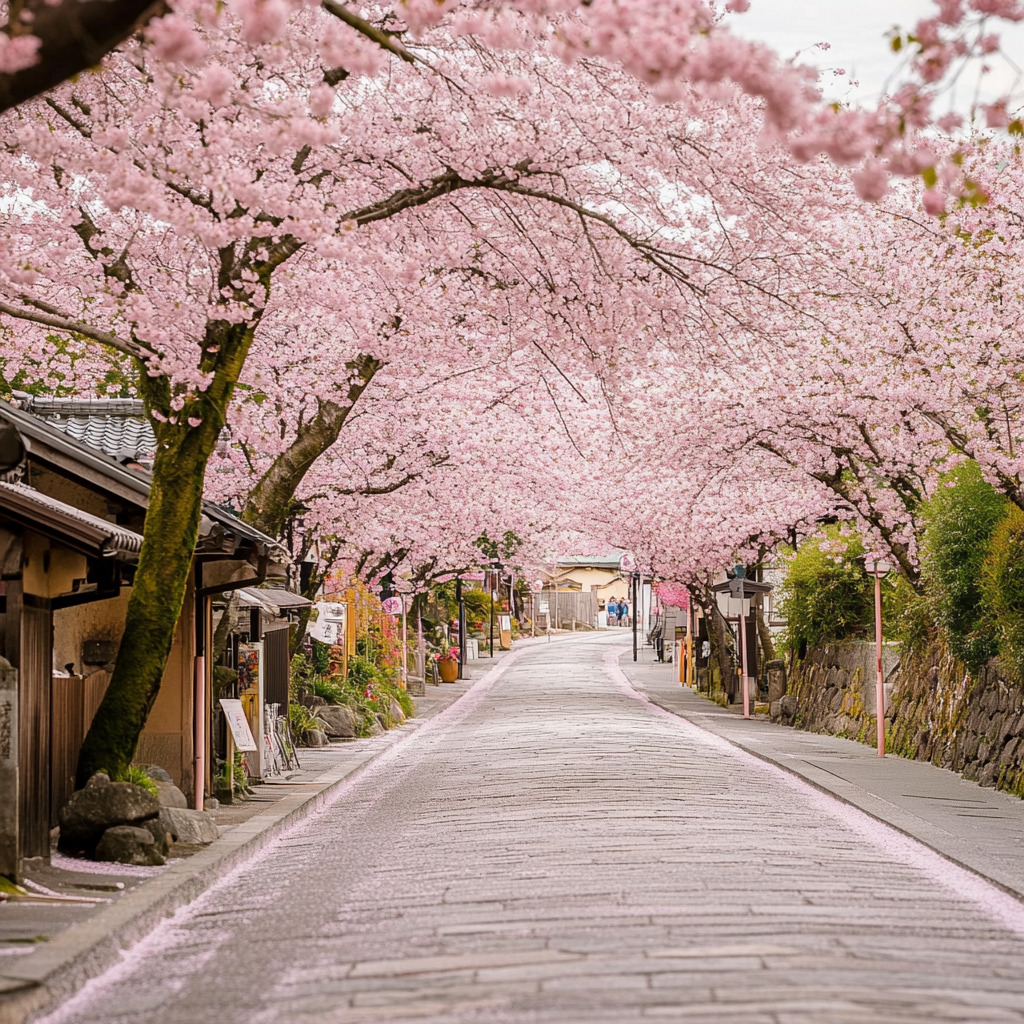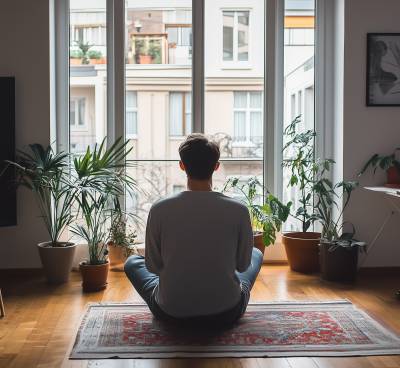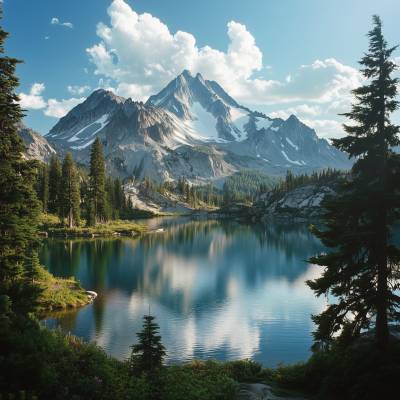The taxi driver hands back your change with both hands and a slight bow. You've barely been in Japan for three hours, but already you're noticing these little moments of grace. The vending machine that chirps a cheerful "arigato" when you buy a coffee (fun fact: Japan has over 5 million vending machines—one for every 25 people).
Wait, Is Japan Really That Different? Yes and no. Japan occupies this fascinating middle ground: familiar enough that you won't experience total culture shock, yet different enough to constantly surprise you. The trains run with Swiss precision. The toilets have more buttons than your TV remote (including seat warmers, bidet functions, and even "sound princess" audio to mask bathroom noises). The convenience stores sell food you'd actually want to eat—7-Eleven's egg salad sandwiches have cult status among locals.
When Should I Go? (Hint: There's No Wrong Answer)
Cherry blossom season (late March to early April) gets all the Instagram glory, but here's a secret: Japan’s meteorological agency issues an annual sakura forecast tracked like election results. During hanami (flower-viewing) parties, office workers reserve prime picnic spots with blue tarps at dawn. For autumn colors, the maple trees in Kyoto’s Arashiyama district turn so vibrant they make New England foliage look washed out.
Tokyo: The City That Never Stops Reinventing Itself
Shibuya Crossing isn’t just a chaotic scramble—it’s a marvel of urban choreography. At peak hours, up to 3,000 people cross simultaneously, guided by hidden traffic engineers watching from underground control rooms. Look for the Hachiko statue, honoring the loyal dog who waited nine years for his deceased owner. It’s now Tokyo’s most famous meeting spot, though few know Hachiko’s stuffed remains are displayed at the National Museum of Nature and Science.
Kyoto: Where Traditional Japan Lives On
Fushimi Inari’s 10,000 torii gates aren’t just photogenic—each is donated by businesses hoping for good fortune, with donations starting around $4,000. The winding path takes 2-3 hours to hike fully, but most visitors don’t realize the summit offers panoramic views of Kyoto and a miniature shrine where you can buy fox-shaped ema (prayer plaques).
Secret Japan: Places Your Guidebook Missed
While Tokyo and Kyoto dazzle first-timers, Japan’s real magic often hides in plain sight. Take Kanazawa—a smaller Kyoto without the crowds, where geisha still perform in wooden tea houses and the 17th-century Kenrokuen Garden changes its pine trees’ support ropes seasonally to prevent snow damage. Or Tottori Sand Dunes, where camel rides and towering Saharan-like landscapes make you question if you’re still in Japan.
For something truly surreal, visit Okunoshima—an island overrun by friendly wild rabbits. Once a secret chemical weapons site, it’s now where bunnies hop past abandoned bunkers. Pro tip: Buy cabbage at the ferry terminal. Those floppy-eared locals will mug you for it.
The Food (Oh My Goodness, The Food)
Japan has more Michelin-starred restaurants than any other country, but some of its best meals cost less than $10. Did you know Kobe beef cattle get daily massages and beer during summer? Or that plastic food displays in restaurant windows originated in 1920s Osaka? For the ultimate cheap thrill, try konbini fried chicken—Lawson’s "L Chicken" sells over 100 million pieces annually.
Getting Around: Easier Than You Think
Shinkansen trains average less than one minute delay annually—they once apologized for departing 25 seconds early. Stations have their own jingles: Tokyo’s Yamanote Line plays a different melody at each stop. Lost? Look for "omotenashi" in action: Staff will often walk you to your platform rather than give directions.
Bath Culture: More Than Just Getting Clean
Japanese bathing rituals could fill a PhD thesis. In Beppu’s "hell ponds," neon-blue mineral waters hit 98°C—they’re for viewing, not dipping. At Dogo Onsen (oldest bathhouse in Japan, circa 1894), staff still shout "Agari!" to announce hot water refills, just like in the Studio Ghibli film Spirited Away.
Here’s the unwritten rulebook: - Never let your towel touch the bath water (place it on your head or rock) - Wash thoroughly at the shower station before entering - Tattoo? Seek "onsen for foreigners"—many traditional spots still ban ink
For the ultimate flex, book a ryokan with a konyoku (mixed-gender bath). Yes, they exist. No, nobody stares.
When Japan Gets Weird (In the Best Way)
This is the country that built a robot hotel (Henn na Hotel), then fired the robots for being incompetent. Where you can dine at a Ninja-themed restaurant staffed by actual martial artists throwing shuriken over your udon. Where "cat cafés" sparked a whole menagerie—now you can sip lattes with owls, hedgehogs, or micro-pigs.
Don’t miss Tokyo’s Golden Gai—a cluster of six alleyways packed with 200+ bars the size of broom closets. Some seats only 3—if you’re invited in, you’ve passed the vibe check. For daytime weirdness, head to Nakano Broadway: four floors of vintage Godzilla toys, $10,000 samurai swords, and capsule machines dispensing everything from used underwear to dinosaur fossils.
Nature’s Japan: Where the Wild Things Are
Beyond neon and bullet trains lies a country that’s 70% forested mountains. In Shiretoko National Park (Hokkaido), brown bears outnumber humans. Winter brings drift ice you can walk on—if you dare. Yakushima Island’s ancient cedar forests inspired Princess Mononoke’s setting—hike through moss-covered trails where trees are 1,000+ years old.
Active volcanoes? Japan has 111. Hike Mount Aso’s Nakadake Crater when it’s not spewing ash—the emerald-green lake inside looks Photoshopped. Prefer water? Okinawa’s Kerama Islands offer snorkeling with bioluminescent plankton that glow blue when you move—like swimming through stars.
Festivals: When Japan Turns the Volume to 11
If your trip overlaps with a matsuri (festival), cancel all plans. Kyoto’s Gion Matsuri (July) features massive floats weighing up to 12 tons, pulled through streets by teams chanting centuries-old songs. At Osaka’s Tenjin Matsuri (July 24-25), fireworks explode over boats parading down the river—it’s been happening since 951 AD.
For pure chaos, try Hadaka Matsuri in Okayama (February). Thousands of near-naked men fight to touch a "lucky stick" thrown by priests—it’s like a rugby scrum meets a sauna party. Ladies’ version? The Kanamara Penis Festival (yes, really), where giant phallus floats promote… reproductive health.
Japan After Dark: The Country That Never Sleeps (Except When It Does)
Tokyo’s nightlife needs no introduction—but did you know pachinko parlors legally can’t pay cash prizes? Winners trade silver balls for "prizes" like lighters, then sell them at covert shops nearby. It’s gambling with extra steps.
For something tamer, try yozakura—nighttime cherry blossom viewing. Temples like Tokyo’s Chidorigafuchi install magical illuminations, turning petals into floating lanterns on moats. In winter, Nabana no Sato’s LED light displays cover entire hillsides—over 8 million bulbs dancing to music.
Just remember: Last trains stop around midnight. Miss it? Embrace the "hotel for a few hours" culture—capsule hotels or manga cafés with private booths. Or join salarymen at 24-hour ramen shops—nothing bonds like slurping noodles at 3 AM.
Japan With Kids: Beyond Disney
Tokyo Disney gets crowded, but Japan’s kid-friendly secrets are better. At the Ghibli Museum, crawl inside a Catbus and watch exclusive Studio Ghibli shorts. Hiroshima’s Okunoshima (Bunny Island) delights children, while the Edo-Tokyo Open Air Architectural Museum lets them enter real samurai houses.
Teens will dig Osaka’s TeamLab Borderless—digital art that climbs walls and responds to touch. For all ages: Aomori’s Nebuta Museum showcases giant illuminated samurai floats from the famous summer festival. Interactive displays let you "ride" them via AR headsets—samurai selfies included.
The Art of Japanese Quiet
Japan’s loudest trait might be its silences. In temple gardens like Kyoto’s Ryoan-ji, raked gravel patterns encourage meditation—scholars still debate their meaning. Stay at Koyasan’s temple lodgings to join monks in morning prayers, chanting under 1,200-year-old cedar trees.
Even cities have quiet corners. Tokyo’s Meguro River becomes a tunnel of pink during sakura season, yet remains strangely serene. For ultimate zen, try shinrin-yoku (forest bathing)—guided walks through old-growth forests where the only sounds are rustling leaves and your own heartbeat.
Your Japan Starter Kit
Before you go:
- Download Japan Official Travel App (real-time transit + disaster alerts)
- Buy a Suica/Pasmo card immediately upon arrival for touch-and-go transit
- Pack slip-on shoes—you'll be removing them constantly
- Learn to say "oishii" (delicious)—chefs will beam with pride
When you're there:
- Use convenience store ATMs (they accept foreign cards)
- Point at food pictures if stuck—it's expected and welcomed
- Carry a small trash bag—public bins are rarer than unicorns
- Bow slightly when receiving/giving money—it's polite, not performative
Final Thoughts: Embrace the Contradictions
Japan thrives on beautiful contradictions: ancient and futuristic, formal yet warm, familiar but foreign. Rather than trying to reconcile these opposites, learn to appreciate how they harmonize.
Your first trip won't be your last. Most visitors leave Japan already planning their return, with mental lists of places they couldn't fit into their itinerary. Accept that you can't see everything, and focus instead on creating a few perfect memories rather than a rushed highlight reel.
The Japan you discover might not match the Japan you've seen in movies or read about in books. It might be messier, more complex, more human than the perfectly composed images suggest. That's the real magic—finding your own personal connection to a country that somehow feels both exactly as you imagined and nothing like you expected.
Japan doesn't give up its secrets easily. But lean into the confusion, laugh when you accidentally order something unrecognizable, and let yourself be swept up in the beautiful chaos. That moment when a train arrives exactly as your app predicted? When a stranger walks you three blocks to find your Airbnb? That's Japan—perfectly imperfect, endlessly fascinating, and worth every bewildered minute.













